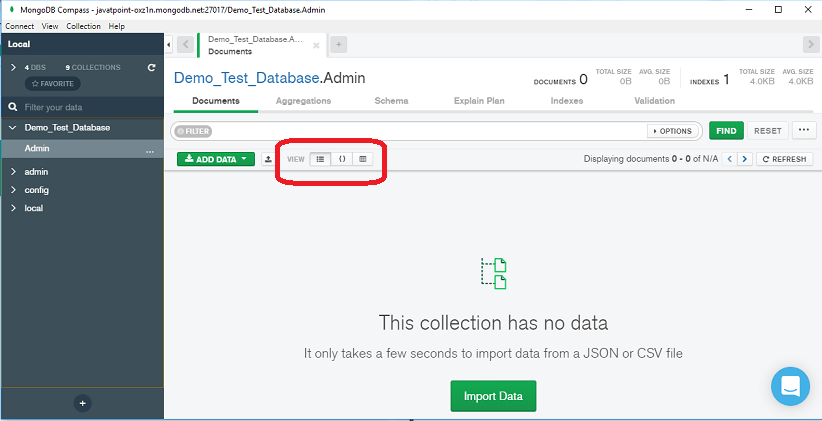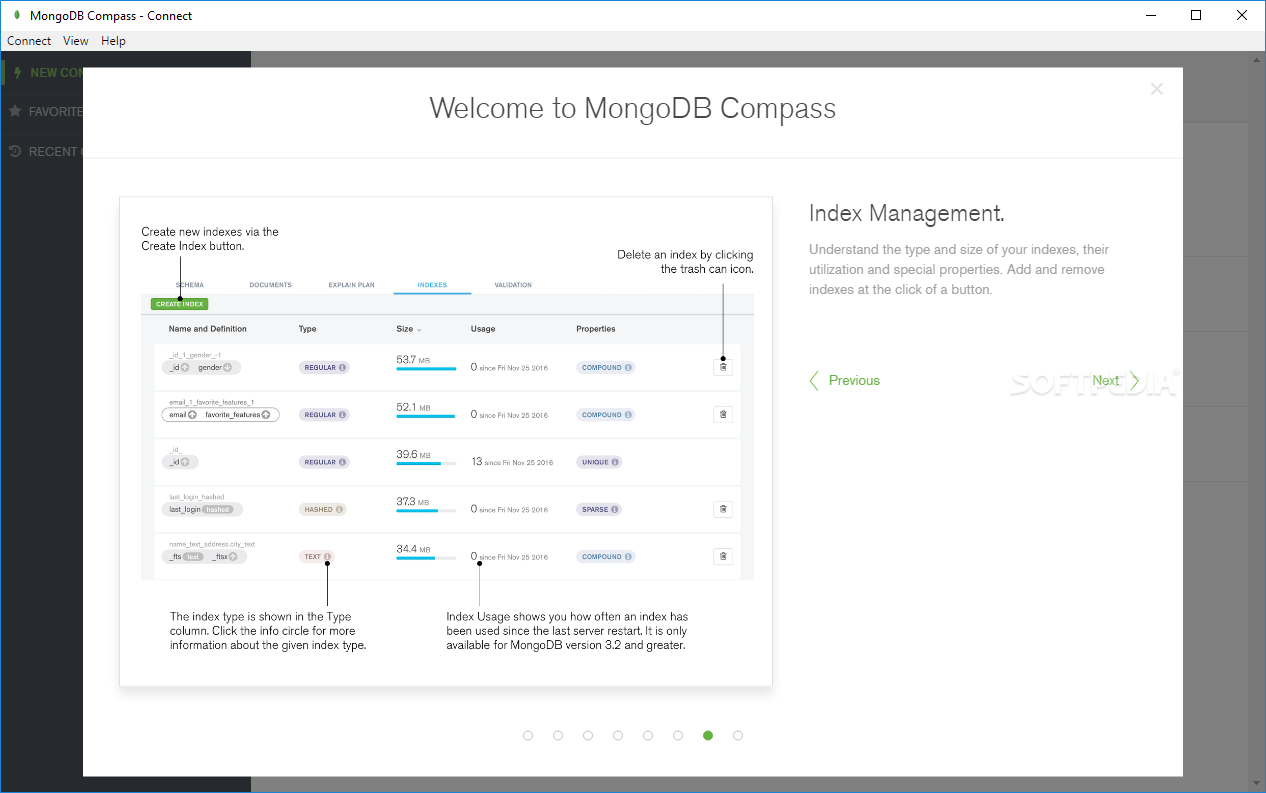
- #MONGODB COMPASS FILTER HOW TO#
- #MONGODB COMPASS FILTER DRIVERS#
- #MONGODB COMPASS FILTER DRIVER#
- #MONGODB COMPASS FILTER FULL#
- #MONGODB COMPASS FILTER SOFTWARE#
#MONGODB COMPASS FILTER DRIVERS#
You can find the downloaded JDBC drivers in the IntelliJ IDEA configuration directory. For a direct download link, refer to the JetBrains JDBC drivers page.

Click this link to download drivers that are required to interact with a database.
#MONGODB COMPASS FILTER DRIVER#
You can either specify them separately and use the automatically generated URL, or you can enter the URL directly in the corresponding field.Ĭheck if there is a Download missing driver files link at the bottom of the connection settings area.

Read more about the DNS seedlist connection format in DNS Seedlist Connection Format at .įor the URL only connection type, the JDBC URL that you enter is used as is.įor the other connection types, the JDBC URL is broken down into connection details.

MongoDB Atlas (SRV protocol): DNS seedlist connection format (for example, mongodb+srv:///). Read more about standard connection string format in Standard Connection String Format at. In the Driver list, leave the default driver option, unless another driver is required for your connection.įrom the Connection type list, select the connection type depending on the connection details that you have:ĭefault: standard connection string format (for example, mongodb://localhost:27021/admin). In the General tab of Data Sources and Drivers dialog right pane, specify the driver and connection type. Navigate to Data Source and select MongoDB. In the Database tool window ( View | Tool Windows | Database), click the New icon ( ) in the toolbar. You can do this using one of the following ways:įrom the main menu, navigate to File | New | Data Source and select MongoDB. To connect to the database, create a data source that will store your connection details.
#MONGODB COMPASS FILTER SOFTWARE#
For example, if you want to run a database on your machine and connect to that database, the corresponding DBMS software must be installed on the machine first. It is assumed that you already have the necessary prerequisites and the database is up and running. This topic presents a general procedure on how you can connect to MongoDB from IntelliJ IDEA. To download MongoDB database software, refer to the official software downloads.
#MONGODB COMPASS FILTER FULL#
Open the Installed tab, find the Database tools and SQL plugin, and select the checkbox next to the plugin name.įor full information about MongoDB, refer to the official documentation. Press Control+Alt+S to open the IDE settings and then select Plugins. The Database tools and SQL plugin is available only in IntelliJ IDEA Ultimate. If the relevant features aren't available, make sure that you didn't disable the plugin. In this case you can simply set a filter on the property_type field that is equal to the requested value.This functionality relies on the Database tools and SQL plugin, which is bundled and enabled in IntelliJ IDEA by default. Suppose you want to extract all properties of type “House” from the AirBnB database. Information about the indexes defined for the selected collection is also shown. The other 3 menus ( Explain Plan, Indexes and Validation) will not be used in this tutorial, but are used, as you can see from their names, respectively to analyze the execution plan of a query, manage indexes and insert validation rules for the documents stored in the collection.įinally, in the upper right part of the screen some information about the number of comments saved, the space occupied both by the collection and on average by each document is always displayed.
#MONGODB COMPASS FILTER HOW TO#
Next we’ll see how to use it to understand which queries can return results of interest. The Schema menu is used to analyze the schema of the data in the collection and retrieve some statistics about the distribution of the data. The second menu is related to aggregation pipelines and is used for more complex queries that require transformation operations of the data present in the documents. Also, if there is any syntax error the badge next to the form field will have a red colored background. As you type, in fact, MongoDB Compass will suggest the fields and operators that might be useful to compose the query. Very useful features of the query form are the auto-completion and the syntax validation. To enter all these options, simply expand the query form by clicking on the OPTIONS button. It is possible to insert filters, projections, sort conditions and limitation of the number of records returned. For each document displayed, you can edit it, copy it to your clipboard, duplicate it and delete it using the buttons on the right associated with each document.Īs mentioned earlier, this screen can be used to query the collections. The other views are the JSON (available since version 1.2) and the tabular view. If there are complex structures within a document (embedded documents, arrays) it is possible to expand them to display the data present.


 0 kommentar(er)
0 kommentar(er)
